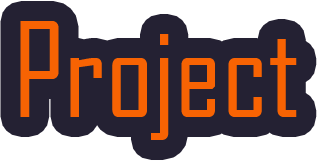Team:Tianjin/Project
From 2012.igem.org
Austinamens (Talk | contribs) |
Austinamens (Talk | contribs) |
||
| Line 105: | Line 105: | ||
The Glossary: | The Glossary: | ||
| - | * O-Key System -- Any orthogonal system containing a pair of orthogonal ribosome and mRNA | + | * The O-Key System -- Any orthogonal system containing a pair of orthogonal ribosome and mRNA |
* The O-Key -- the orthogonal ribosome, which serves like a key to translation the orthogonal mRNA | * The O-Key -- the orthogonal ribosome, which serves like a key to translation the orthogonal mRNA | ||
* The O-Lock -- the orthogonal mRNA, which can only be deciphered by the O-Key. | * The O-Lock -- the orthogonal mRNA, which can only be deciphered by the O-Key. | ||
=Orthogonal System= | =Orthogonal System= | ||
| - | [[file:TJU2012-Proj-fig-1.png| | + | [[file:TJU2012-Proj-fig-1.png|thumb|200px|right|'''Figure 1.''' Word "RNA" (from "http://www.mfpl.ac.at")]] |
By rationally mutate the Shine-Dalgarno (SD) and anti-Shine-Dalgarno (ASD) sequence, we are able to take advantage of the interaction of mRNA and ribosome to build our O-Key System of orthogonal ribosome and orthogonal mRNA. Within this system, we constructed an operon containing RFP and GFP coding sequence to verify the orthogonality of the O-Key. By selectively mutate the SD sequence of RFP or GFP, we were able to establish four translation pathways to characterize the effect of the O-Key System. In addition, we set up a model to predict the output of GFP and RFP under various circumstances. The model calculates the ΔG of ASD and SD sequence binding, and make use of this energy to evaluate the feasibility and translation efficiency of our O-Key System. The model turned out to be highly convincing as it corresponds with our wet lab result. In the end, both the wet and dry lab results matches our design. | By rationally mutate the Shine-Dalgarno (SD) and anti-Shine-Dalgarno (ASD) sequence, we are able to take advantage of the interaction of mRNA and ribosome to build our O-Key System of orthogonal ribosome and orthogonal mRNA. Within this system, we constructed an operon containing RFP and GFP coding sequence to verify the orthogonality of the O-Key. By selectively mutate the SD sequence of RFP or GFP, we were able to establish four translation pathways to characterize the effect of the O-Key System. In addition, we set up a model to predict the output of GFP and RFP under various circumstances. The model calculates the ΔG of ASD and SD sequence binding, and make use of this energy to evaluate the feasibility and translation efficiency of our O-Key System. The model turned out to be highly convincing as it corresponds with our wet lab result. In the end, both the wet and dry lab results matches our design. | ||
Revision as of 01:09, 27 September 2012

The Glossary:
- The O-Key System -- Any orthogonal system containing a pair of orthogonal ribosome and mRNA
- The O-Key -- the orthogonal ribosome, which serves like a key to translation the orthogonal mRNA
- The O-Lock -- the orthogonal mRNA, which can only be deciphered by the O-Key.
Orthogonal System
By rationally mutate the Shine-Dalgarno (SD) and anti-Shine-Dalgarno (ASD) sequence, we are able to take advantage of the interaction of mRNA and ribosome to build our O-Key System of orthogonal ribosome and orthogonal mRNA. Within this system, we constructed an operon containing RFP and GFP coding sequence to verify the orthogonality of the O-Key. By selectively mutate the SD sequence of RFP or GFP, we were able to establish four translation pathways to characterize the effect of the O-Key System. In addition, we set up a model to predict the output of GFP and RFP under various circumstances. The model calculates the ΔG of ASD and SD sequence binding, and make use of this energy to evaluate the feasibility and translation efficiency of our O-Key System. The model turned out to be highly convincing as it corresponds with our wet lab result. In the end, both the wet and dry lab results matches our design.
Genetic Pollution Prevention and Genetic Encryption
Aiming at gene pollution, we employed the orthogonal system – O-Key – to prevent gene pollution. O-Key showed a promising application information encryption. Furthermore, the O-Key are applied to the entire organism to construct the bacteriophage. In addition, a successful interdisciplinary model was constructed to predict the diffusion of exogenous gene across space and time.
Logic Metabolism Regulation
We describe the principles of Yeast Assembler, and specifically used this method to construct the gene needed to produce Violacein. Through such a experiment, we could also prove the feasibilities of orthogonal system in regulating metabolism. Furthermore, we talked about the application of And gate based on orthogonal system in adjusting metabolism.
 "
"




















